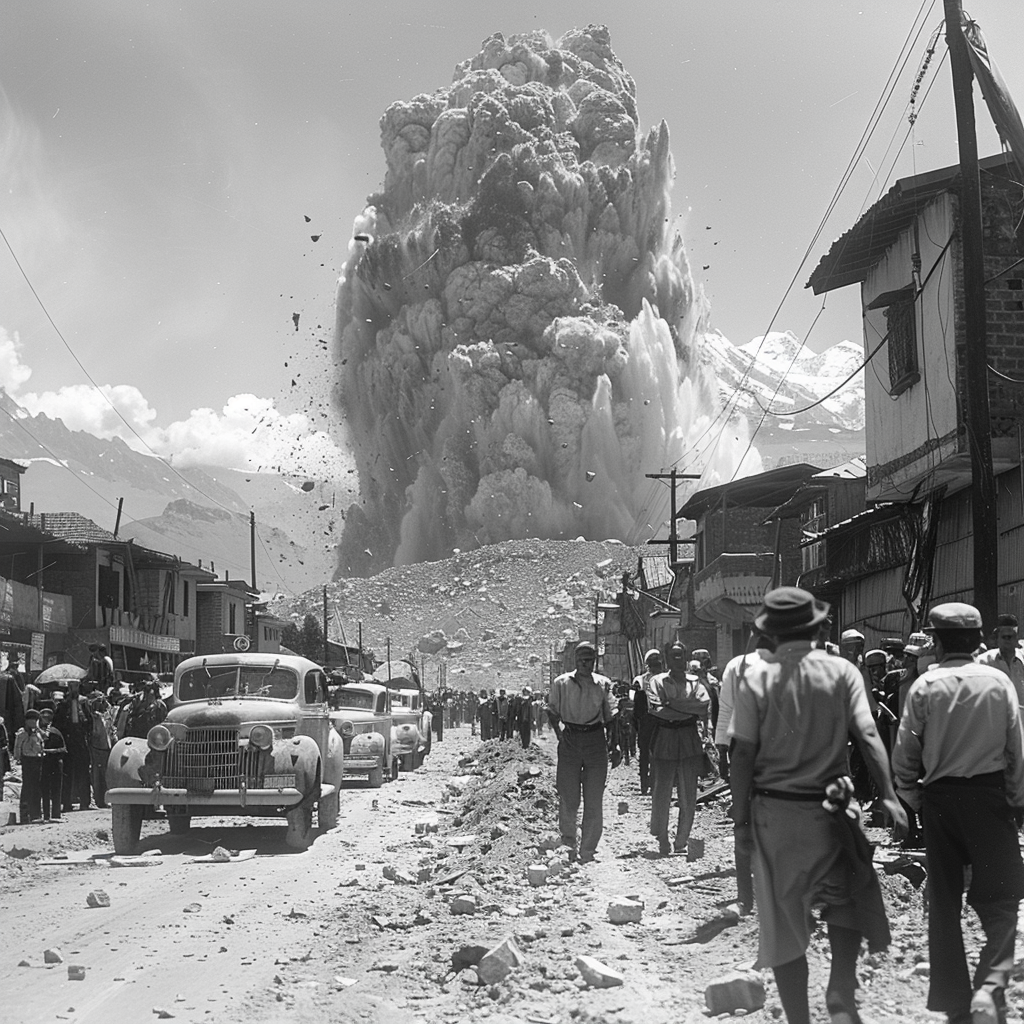Historical Background and Immediate Impact of the 1970 Ancash Earthquake
On May 31st, 1970, a catastrophic 7.75 magnitude earthquake struck off the coast of Peru, causing unprecedented destruction. The region has a long history of seismic activity due to its position along the Pacific Ring of Fire, a zone known for frequent earthquakes and volcanic eruptions. The geological conditions, including the subduction of the Nazca Plate beneath the South American Plate, make this area particularly susceptible to such events.
The epicenter of the earthquake was located roughly 35 kilometers off the coast, near the town of Chimbote. The initial shock was followed by a series of aftershocks, further compounding the devastation. The earthquake’s immediate effects were felt across a vast area, causing widespread panic and chaos. Buildings crumbled, roads cracked, and entire communities were left in ruins. Telecommunications were disrupted, making it difficult for rescue operations to be coordinated effectively.
One of the most tragic consequences of the 1970 Ancash earthquake was the massive landslide it triggered on Mount Huascarán, Peru’s highest peak. The seismic activity dislodged a significant portion of the mountain’s north face, sending a torrent of rock, ice, and mud down into the Santa Valley at speeds exceeding 300 kilometers per hour. This catastrophic landslide buried the town of Yungay and nearby villages under tons of debris, resulting in a staggering death toll estimated between 66,000 and 70,000 people. It remains one of the deadliest avalanches in recorded history.
First-hand accounts from survivors recount the terrifying moments during and after the earthquake. Contemporary news reports and photographic evidence further illustrate the scale of the disaster. Images of crumbled infrastructure and devastated communities capture the immense human and material loss. These accounts and records serve as poignant reminders of the fragility of life in the face of natural disasters.
For those interested in further reading, numerous geological studies and historical archives provide in-depth analyses of the 31st May 1970: Ancash earthquake and avalanche in Peru. These resources offer valuable insights into the seismic activity of the region and the long-term impact of this catastrophic event.
The 1970 Ancash Earthquake and avalanche in Peru on May 31st left a lasting imprint not only on the affected communities but also on global disaster response and preparedness protocols. The immediate aftermath saw a robust humanitarian response marked by rescue operations that involved both local and international aid agencies. Despite the swift mobilization, relief efforts encountered significant challenges, including inaccessible terrain and limited infrastructure, which hampered the delivery of essential supplies and medical assistance.
Survivors faced a daunting road to recovery. The psychological trauma inflicted by the disaster was profound, with many individuals experiencing long-term mental health issues. Rebuilding efforts were extensive, focusing on constructing more resilient infrastructure to withstand future seismic events. This disaster highlighted the region’s vulnerability to seismic activities, compelling both local and international stakeholders to reassess and enhance their disaster preparedness strategies.
One of the most significant lessons learned from the 1970 Ancash Earthquake was the critical need for effective early warning systems. Advances in seismology and technology have since led to the development of more sophisticated early warning systems that can provide crucial seconds to minutes of notice before an earthquake strikes. Additionally, building codes have been rigorously updated to emphasize earthquake-resistant designs, mitigating the potential damage of future seismic events.
Public awareness campaigns have played a crucial role in educating communities about earthquake safety. These campaigns have been instrumental in promoting preparedness measures such as emergency kits, evacuation plans, and earthquake drills. Governmental and non-governmental organizations have been pivotal in these efforts, providing resources and support to ensure that communities are better equipped to handle such catastrophes.
Examining case studies from other regions that have implemented similar measures post-disaster, such as Japan and Chile, reveals a pattern of improved resilience and quicker recovery times. Scholarly articles and government reports extensively document these advancements, offering valuable insights into effective disaster management strategies.
The 1970 Ancash Earthquake serves as a somber reminder of the devastating impact of natural disasters and the imperative for continuous improvement in disaster preparedness and response. The lessons learned from this event have undoubtedly contributed to saving lives and reducing suffering in subsequent earthquakes worldwide.

